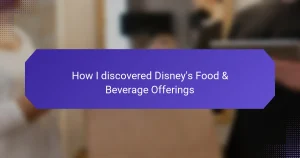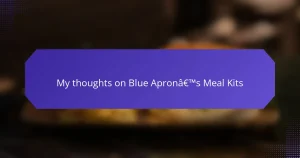Key takeaways
- Cooking challenges enhance creativity, build community, and boost confidence in culinary skills.
- Effective recipe test preparation includes understanding instructions, managing time, and focusing on both taste and presentation.
- Time management strategies, such as task breakdown and keeping a clear workspace, are crucial for successful cooking challenges.
- Mastering techniques like sous vide and flash roasting can significantly improve flavor and efficiency in cooking.

Overview of Cooking Challenges
Cooking challenges make cooking an exhilarating experience, transforming a regular day into a thrilling adventure in the kitchen. I remember the first time I attempted a recipe challenge; I felt a mix of excitement and anxiety, not knowing if I could replicate the intricate dishes I admired on MasterChef. Those moments of doubt pushed me to take risks and discover my culinary style, making every challenge a stepping stone in my cooking journey.
One of the most essential aspects of cooking challenges is the sense of community they foster. Whether you’re competing on a show or joining a virtual contest, the shared experience of tackling the same recipes creates bonds among participants. I often reflect on the late-night chats I had with friends while practicing signature dishes, laughing about our kitchen mishaps and celebrating our successes.
- Creates excitement and fosters creativity.
- Encourages skill development and experimentation.
- Builds a sense of community and shared experience.
- Provides opportunities for friendly competition.
- Helps boost confidence in one’s cooking abilities.
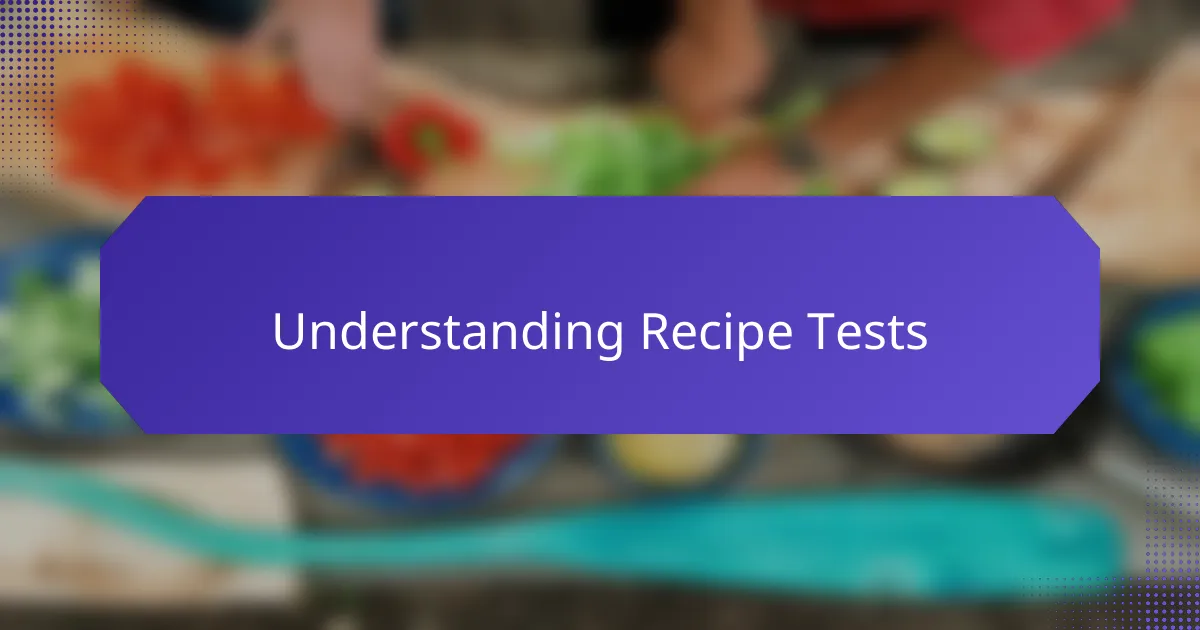
Understanding Recipe Tests
Understanding recipe tests is a crucial step in mastering any cooking challenge, especially when preparing for something as intense as the MasterChef competition. I remember feeling both excitement and anxiety as I tackled my first recipe test. It was as if every dish I prepared was a reflection of my culinary journey—each ingredient carried a memory and every technique told a story.
To prepare effectively, consider the following key aspects of recipe tests:
- Clarity of Instructions: Make sure to read the recipe thoroughly and highlight any crucial steps.
- Timing: Keep track of time closely; I once let a soufflé deflate while I was distracted!
- Ingredient Familiarity: Know your ingredients well. I realized that understanding the flavor profiles helped me elevate my dishes.
- Technique Practice: Rehearse specific techniques ahead of time. I practiced my knife skills until they felt second nature.
- Presentation: Remember that how your dish looks is just as important as how it tastes; I often focused on plating to wow the judges.
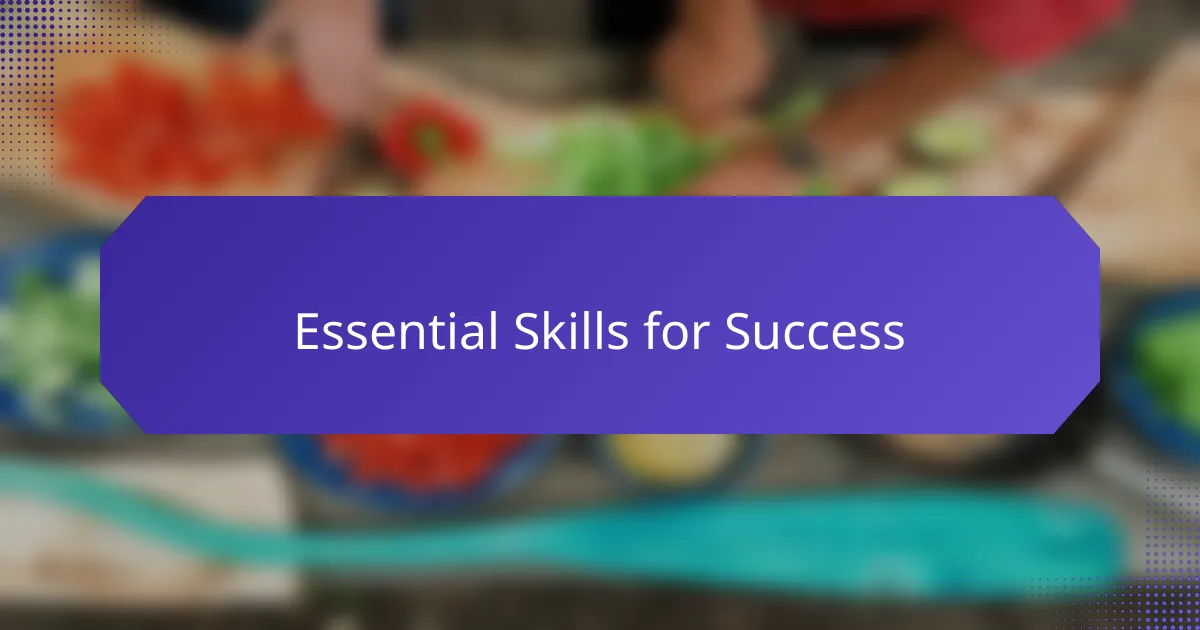
Essential Skills for Success
To succeed in cooking challenges, mastering essential skills is non-negotiable. One skill that stands out is timing. I often found myself in a frantic sprint to plate my dishes before the clock ran out. Timing affects everything from texture to presentation. Have you ever tasted a perfectly cooked steak that was served at the wrong temperature? It’s a game-changer.
Another critical skill is ingredient familiarity. Knowing your ingredients inside and out can dramatically enhance your dish. I remember when I first tackled a delicate soufflé; understanding the subtle differences between types of cheese made all the difference in flavor. It’s about getting to know your pantry. The more you know, the more confidently you can experiment.
Lastly, don’t underestimate the power of presentation. It’s easy to get lost in the taste and forget that the visual appeal plays a huge role, too. I had a breakthrough moment when I learned that a simple garnish could elevate a dish from ordinary to extraordinary. How? It inspires the senses before the first bite even happens!
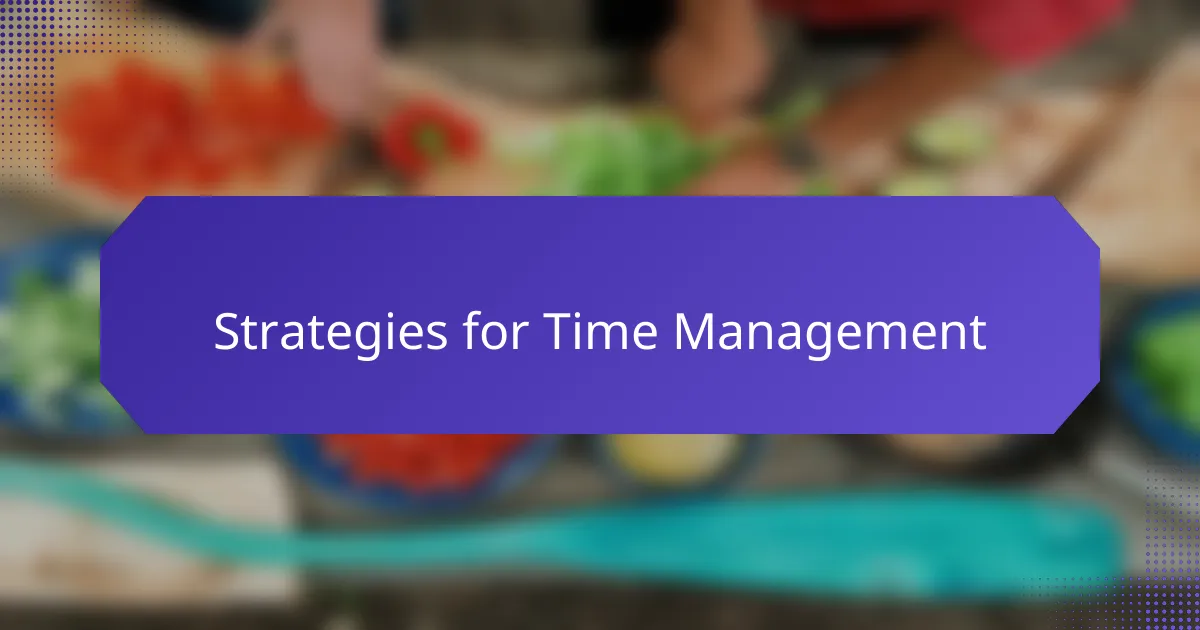
Strategies for Time Management
When I took on MasterChef’s recipe tests, time management became my secret weapon. I quickly learned that breaking the tasks down into smaller, manageable segments made a huge difference. For instance, I’d allocate specific times for prepping ingredients, cooking, and plating, ensuring that each phase was given the attention it needed without becoming overwhelmed.
Another strategy I employed was setting timers for each part of the process. This approach kept me focused and helped me avoid the common pitfall of getting lost in one detail. I found that when you hear that timer go off, it’s both a gentle nudge and a motivator to move on, preventing any unnecessary delays that could throw off my entire cooking rhythm.
Lastly, I always kept a clear workspace. Having everything organized not only saved time but also cut down on stress during the cooking tests. When I could see all my ingredients and tools, it allowed me to concentrate on executing my recipes effectively.
| Time Management Technique | Description |
|---|---|
| Task Breakdown | Dividing the recipe into smaller steps to manage time effectively. |
| Setting Timers | Using timers to keep track of cooking times for each section. |
| Clear Workspace | Maintaining an organized space to minimize distractions and enhance productivity. |
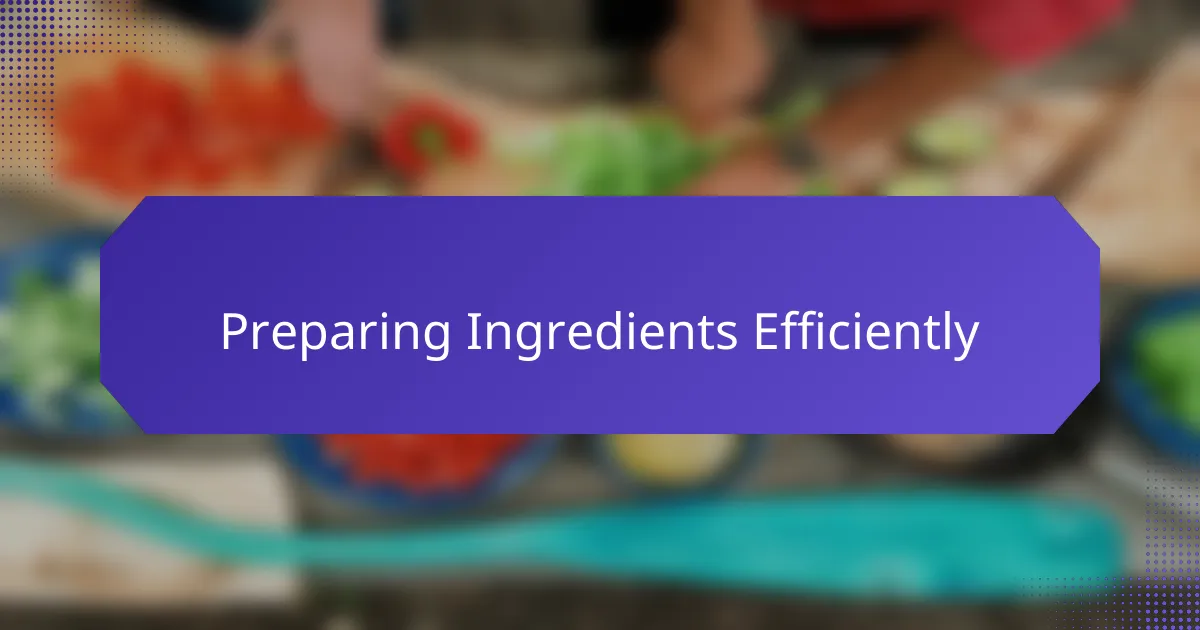
Preparing Ingredients Efficiently
When I tackle MasterChef’s Recipe Tests, preparing ingredients efficiently is key to staying calm under pressure. I remember one challenge where I felt overwhelmed by the number of components I had to manage. By organizing my workspace and grouping similar ingredients together, I could focus on each part of the dish one step at a time, which transformed my anxiety into confidence.
One effective strategy I always rely on is mise en place, a French culinary phrase meaning “everything in its place.” I find that when I measure and prep all my ingredients beforehand, it streamlines the cooking process significantly. Here’s how I typically prepare my ingredients:
- Gather all ingredients: Before starting, I ensure everything is out and ready to go. It saves time and keeps me from hunting for items mid-recipe.
- Wash and chop: I wash and chop produce first since this can take a while. Plus, I love the fresh smell of herbs and veggies filling my kitchen.
- Organize by use: I arrange my ingredients on the counter based on when they will be used. This way, I minimize any unnecessary movement while cooking.
- Label containers: For more complex recipes, I label small bowls or containers. This really helps remind me of each ingredient’s purpose, especially in a fast-paced environment.
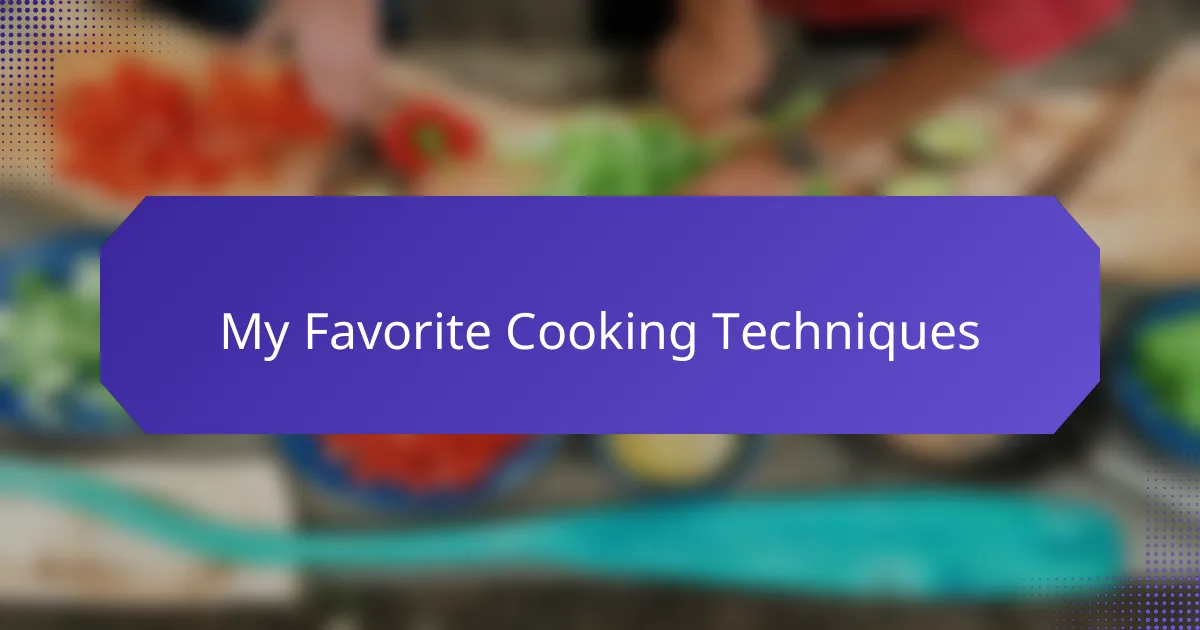
My Favorite Cooking Techniques
When tackling MasterChef’s recipe tests, I discovered that mastering the technique of sous vide changed the game for me. Cooking ingredients in a vacuum-sealed bag in a water bath ensures perfect doneness and incredible flavor infusion. I vividly remember the first time I served sous vide steak; it was a perfect medium-rare, and the glow of my guests’ faces was priceless.
Another favorite technique of mine is flash roasting vegetables. I learned this during a grueling test where time was limited, and I needed to showcase flavor without losing texture. By turning up the oven temperature and tossing veggies with olive oil and seasoning, I created caramelized, delicious bites in just minutes. It was both a time-saver and a flavor booster, and I still use this method for weeknight dinners.
- Sous Vide: Perfect for meats and eggs, retaining moisture and flavor.
- Flash Roasting: High heat for quick cooking; great for veggies.
- Slow Cooking: Ideal for soups and stews; deepens flavors over time.
- Blanching: Quickly cooking and cooling vegetables to preserve color.
- Emulsifying: Creates smooth sauces like hollandaise or vinaigrettes.
